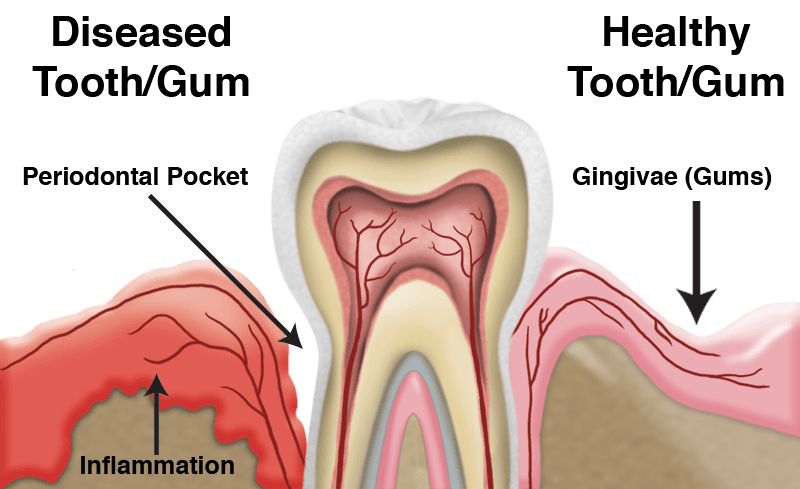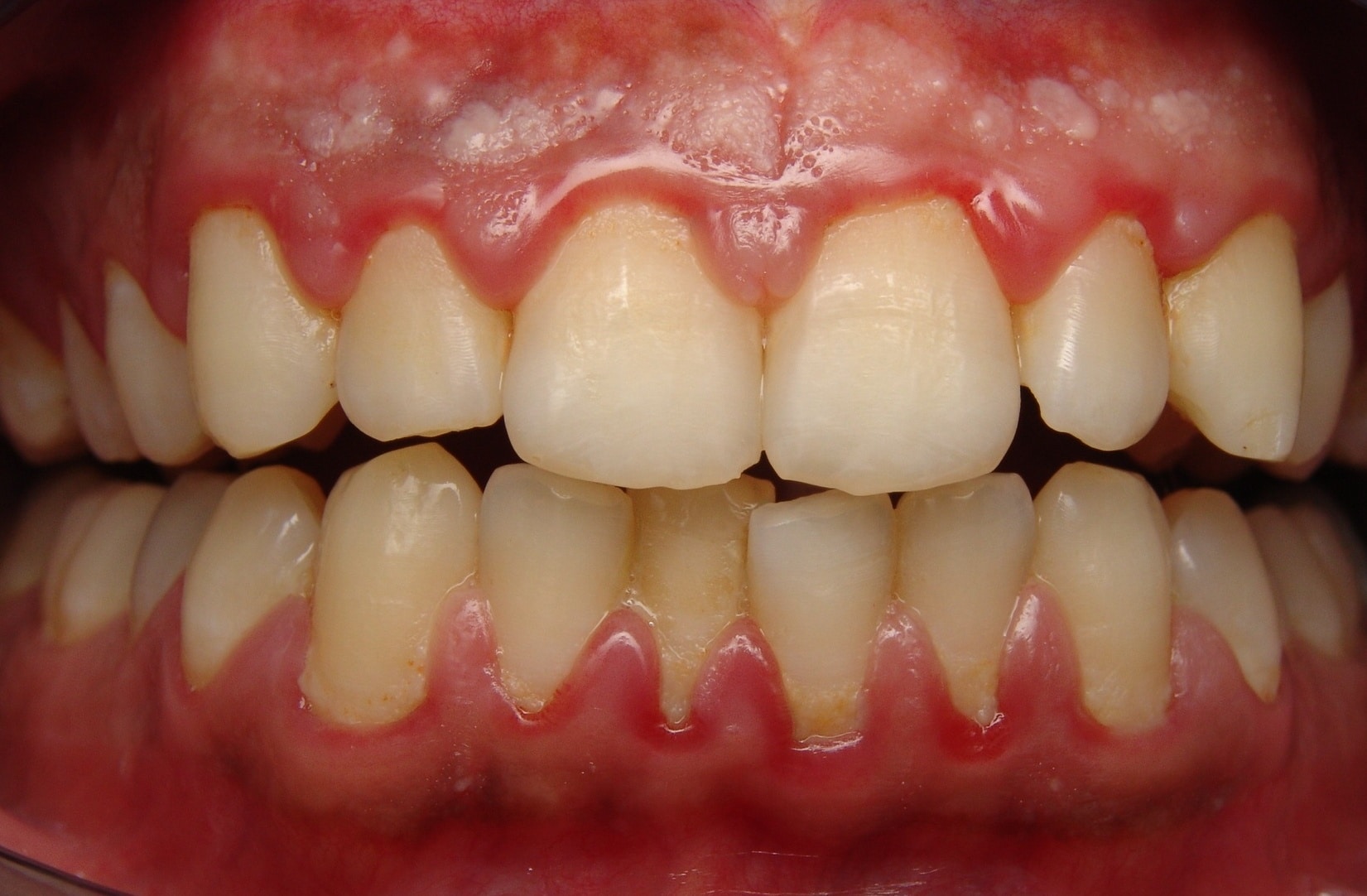Previously, I explained the significance of gum diseases and what can happen if left untreated. In this post, I would like to help patients understand what gum disease is because medical terms such as gingivitis often leave people confused.
Gum diseases always involve bacteria. There are other factors to consider but bacteria play a main role in this. So, here it is.
There are always bacteria in your mouth and you will never get rid of all of them because they are part of us. In the mouth, most of them live around the gum or in the areas that are hard to clean such as between your teeth. It is easy to notice that by the end of the day there is a slimy film around gum because these bacteria are constantly growing. When there are a lot of bacteria, the gum will start to get irritated and swell up. It is similar to getting a cut on your skin. You will notice that around the cut, the skin becomes red, swollen and sore to touch because your body is fighting the bacteria around the wound. This process is called inflammation and the term “gingivitis” is really just a fancy description for inflammation of the gum. Hence one of the signs that you have gum diseases is bleeding gum.
Sometimes bleeding and swollen gum becomes more noticeable during puberty or pregnancy. Remember the body is fighting bacteria. During the time when your body is experiencing changes, the hormonal imbalance can cause your gum to overreact to the bacteria in your mouth. I often hear my patients blaming pregnancy for damages in their teeth. The truth is: pregnancy doesn’t cause gum diseases, it only aggravates an ongoing issue, and it can easily be prevented by exercising good oral hygiene. Hence I recommend seeking professional dental check and cleaning during pregnancy.
The good news is these growing bacteria are soft and they can be removed easily by brushing your teeth. Remember that bacteria live predominantly around the gum and this leaves a big clue as to where you should really brush; that is, closer to the gum rather than on the tooth itself. In a perfect world, no one will ever need a dentist to treat gum diseases.

The problem is nobody is perfect and everybody leaves some bacteria behind. Over a period of time, calcium in your saliva makes these bacterial film hard. They are commonly called “tartar” or “calculus”. It can be seen in the mouth as hard yellow deposit around the teeth but it can also have other colours such as green, brown or black due to staining. Apart from causing bad breath/smell, tartar is the real problem in the process of gum diseases because people can’t remove these themselves. As the hard plaque accumulates between teeth and gum, it pushes the gum away from the teeth and this creates what dentists called “deep pockets”.
There is always space or pocket between gum and teeth. A depth of 1-3mm is considered normal. In a practical sense, I always tell my patients that deep pockets are bad for the simple fact that you can’t push your toothbrush 5mm down to clean between gum and teeth. And if you can’t clean food and bacteria out, the gum diseases is only going to get worse until the point when you lose your teeth as seen in the previous blog. The bottom line is you can’t leave deep pockets or hard plaque around.
Now that we have an idea about the process of gum diseases, the next blog will dive into the treatment of gum diseases: what it is and what to expect…
To your healthy smile.
Dr. Supa
Supa Dental, Melton.



